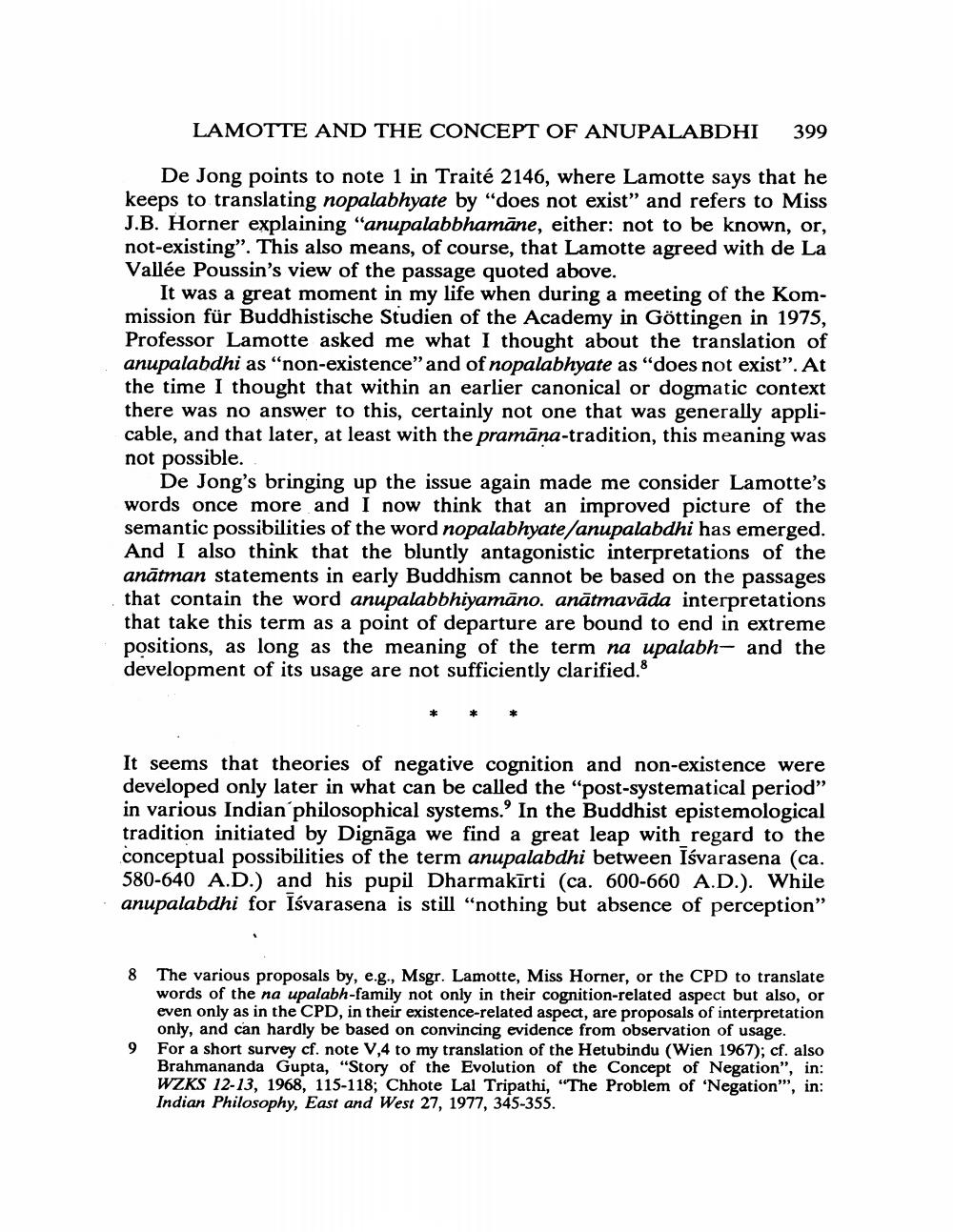Book Title: Lamotte And Concept Of Anupalabdhi Author(s): Ernst Steinkellner Publisher: Ernst Steinkellner View full book textPage 2
________________ LAMOTTE AND THE CONCEPT OF ANUPALABDHI 399 De Jong points to note 1 in Traité 2146, where Lamotte says that he keeps to translating nopalabhyate by "does not exist” and refers to Miss J.B. Horner explaining "anupalabbhamāne, either: not to be known, or, not-existing”. This also means, of course, that Lamotte agreed with de La Vallée Poussin's view of the passage quoted above. It was a great moment in my life when during a meeting of the Kommission für Buddhistische Studien of the Academy in Göttingen in 1975, Professor Lamotte asked me what I thought about the translation of anupalabdhi as "non-existence" and of nopalabhyate as "does not exist". At the time I thought that within an earlier canonical or dogmatic context there was no answer to this, certainly not one that was generally applicable, and that later, at least with the pramāna-tradition, this meaning was not possible. De Jong's bringing up the issue again made me consider Lamotte's words once more and I now think that an improved picture of the semantic possibilities of the word nopalabhyate/anupalabdhi has emerged. And I also think that the bluntly antagonistic interpretations of the anātman statements in early Buddhism cannot be based on the passages that contain the word anupalabbhiyamāno. anātmavāda interpretations that take this term as a point of departure are bound to end in extreme positions, as long as the meaning of the term na upalabh- and the development of its usage are not sufficiently clarified. It seems that theories of negative cognition and non-existence were developed only later in what can be called the “post-systematical period” in various Indian philosophical systems. In the Buddhist epistemological tradition initiated by Dignāga we find a great leap with regard to the conceptual possibilities of the term anupalabdhi between Iśvarasena (ca. 580-640 A.D.) and his pupil Dharmakīrti (ca. 600-660 A.D.). While anupalabdhi for īśvarasena is still “nothing but absence of perception" 8 The various proposals by, e.g., Msgr. Lamotte, Miss Horner, or the CPD to translate words of the na upalabh-family not only in their cognition-related aspect but also, or even only as in the CPD, in their existence-related aspect, are proposals of interpretation only, and can hardly be based on convincing evidence from observation of usage. For a short survey cf. note V,4 to my translation of the Hetubindu (Wien 1967); cf. also Brahmananda Gupta, "Story of the Evolution of the Concept of Negation", in: WZKS 12-13, 1968, 115-118; Chhote Lal Tripathi, "The Problem of 'Negation", in: Indian Philosophy, East and West 27, 1977, 345-355.Page Navigation
1 2 3 4 5 6 7 8 9 10 11 12 13
